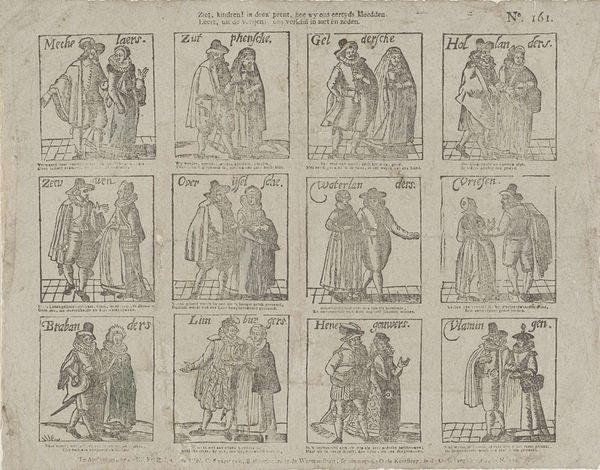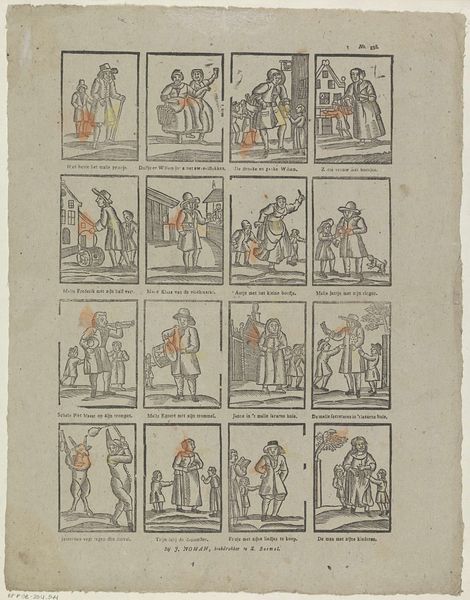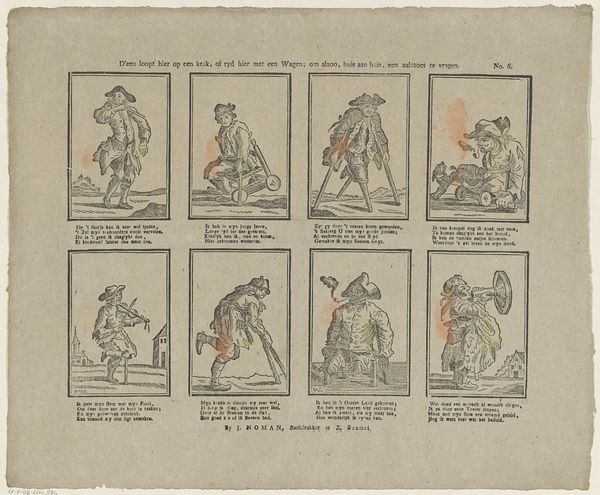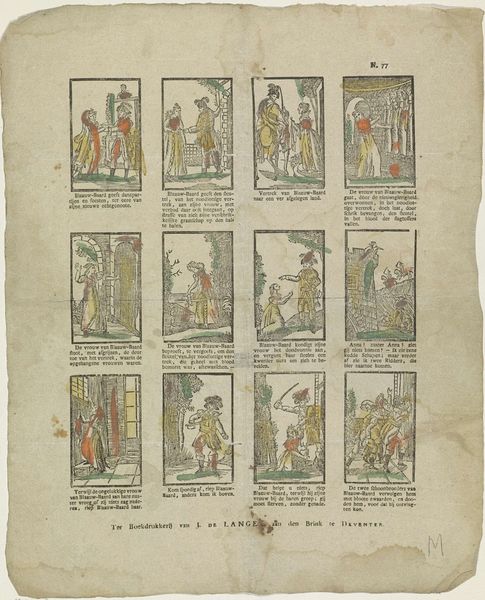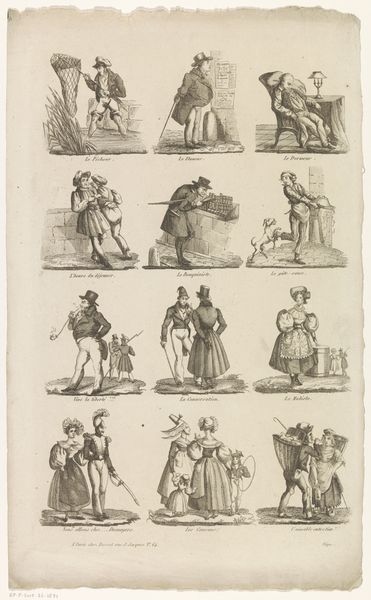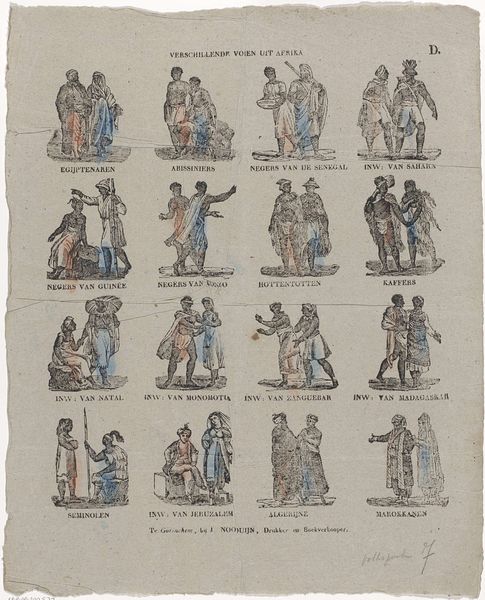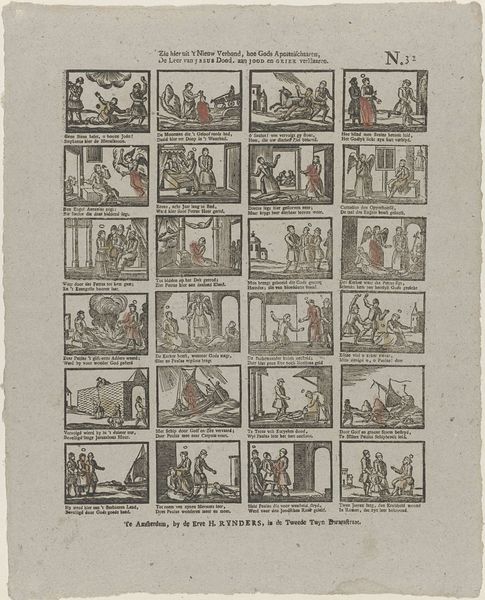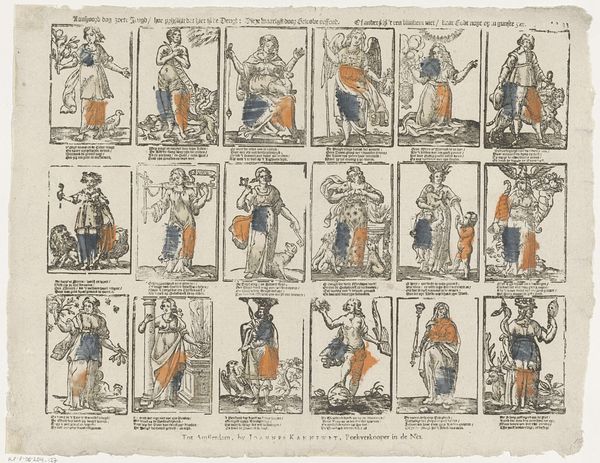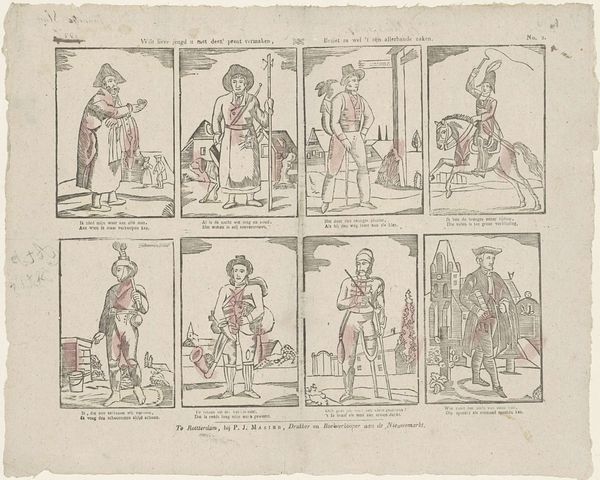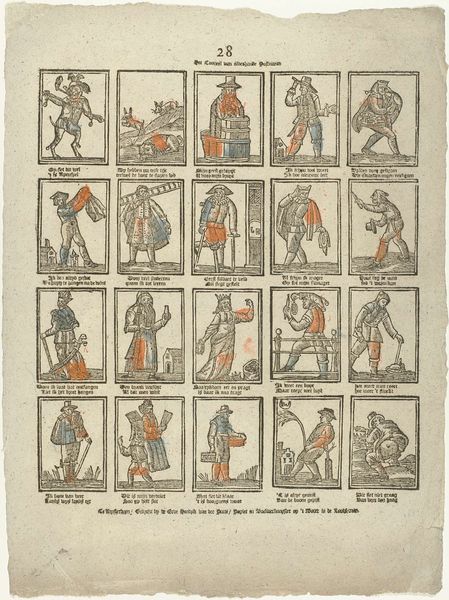
Ziet, kindren! in deez' prent, hoe wy ons eertyds kleedden: / Leert, uit de versjens, ons verschil in aart en zeden 1806 - 1830
0:00
0:00
print, engraving
# print
#
figuration
#
genre-painting
#
history-painting
#
engraving
Dimensions: height 334 mm, width 415 mm
Copyright: Rijks Museum: Open Domain
Curator: At first glance, I see a series of neatly organized squares. It looks like a collection of studies, perhaps a survey of different regional dress styles, unified by the texture of the engraving. Editor: Exactly. This engraving, whose full title translates to “Look, children! In this print, how we used to dress: / Learn, from the verses, our differences in character and customs," offers a fascinating glimpse into the social fabric of the Netherlands between 1806 and 1830. Johan Noman is the artist. Curator: The use of line is incredibly precise. Look at the detail in the clothing – the hats, the lace collars, even the suggestion of folds in the fabric. There is something quite graphic about the stark contrast. Editor: Yes, but consider what these contrasting outfits and figures represent: regional identity. These aren't just pretty pictures of clothes; they're coded messages about class, community, and belonging in a time of enormous upheaval. Think about the Napoleonic era and the making of modern national identities. Each carefully depicted figure tells a story. Curator: I can see that. And in their rendering, you're absolutely right; Noman’s commitment to uniformity, with all figures posed similarly, removes, almost flattens, any expressive quality. The composition, rather than allowing one narrative, establishes a grid for comparison of component regions, underscoring visual similarities rather than highlighting distinctions. Editor: And the little verses under each image, let's not forget those! They're meant to be didactic, yes, teaching children about the past, but they're also perpetuating stereotypes, defining "us" versus "them." What values do the dresses convey, how is a certain city associated with moral behavior? Who is the viewer and what's at stake for them? Curator: Interesting. Well, whatever the values encoded in them, from a formal perspective, these pairings are meticulously crafted studies. Looking at each little vignette as a structural whole, what is evident for me is balance of each picture element. Each figure finds its pair. Editor: Balance perhaps on the level of design, yes. But it also exposes the work's deeper social intentions. It’s about how clothes become a shorthand for who we are—or who others think we are. Curator: A reminder, then, of the powerful intersection of image and identity. Editor: Precisely. A very visual lesson in the construction of culture itself.
Comments
No comments
Be the first to comment and join the conversation on the ultimate creative platform.
